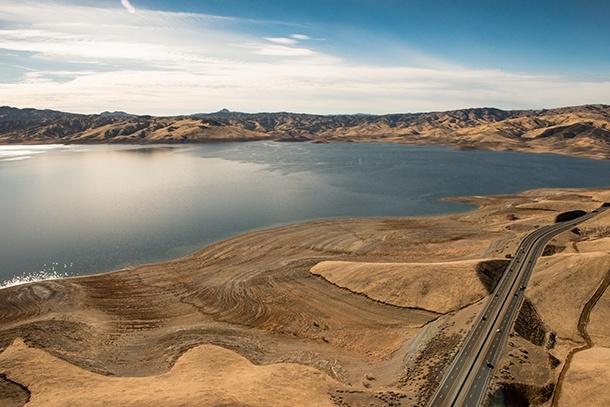
The bottled water industry has grown exponentially the past few decades despite the fact tap water in the United States is generally safe. Never mind the fact bottled water producers have had more than their fair share of safety issues: Bottled water has become accepted by consumers. While companies such as Nestlé insist they are taking responsibility for water stewardship and recycling, they also bottle their water at dubious sources, including those in drought stricken regions.
In fact, much of the bottled water produced in the U.S. comes from areas affected by drought. As an article recently posted on Mother Jones illustrates, four of the most popular bottled water brands — Aquafina, Dasani, Arrowhead and Crystal Geyser — come largely from California. True, farming takes up the lion’s share of water in the state, and bottled water in the grand scheme of things is not parching California on its own. But at a time when California is struggling to provide residents, industry and farmers adequate supplies of water, more citizens are asking why it is bottled here and shipped out of state.
Part of the problem is regulation, or lack of it. While most states monitor and restrict groundwater use to ensure supplies are not depleted, California lacks any such laws. The state’s legislature is finally starting to address this oversight, but even if the legislation in current form is passed, the state will long be in danger if the current drought conditions do not improve. Agencies in charge of groundwater basins will not have to issue sustainability plans until 2020, and those plans would not have to be fully implemented until 2040, according to the Washington Post. Over half of the bottled water churned in California and ending up in PET bottles is groundwater, though the bottling companies prefer the more exotic term, “spring water.”
Whether it is spring water, groundwater or water coming from other municipal supplies, the point is that the state could be using this water for far better use than allowing beverage companies to bottle it and mark it up to sell it at obscene profit margins. Despite the bottling industry’s bizarre claims that bottled water production is “ironically” low compared to that of processing other beverages, it still takes almost 1.7 liters of water to produce a liter of bottled water. Add the wasted plastic resulting from the petroleum that could be better used as fuel, plus the energy required to produce bottled water, and we have an oddly unsustainable industry despite these companies’ fervent claims to the contrary.
In the end, consumers need to be convinced tap water really is the cost-effective and safe alternative. While many bottling companies refuse efforts at transparency when it comes to disclosing the actual sources of their water, recent snafus such as the loss of drinking water in Toledo, Ohio (through no fault of the city) give bottlers more ammunition to pitch their product. Nevertheless, the strange spectacle of bottling water in a state entering its third year of drought should give us pause before we spurn the tap in favor of those brightly-labeled bottles.
Image credit: Climate.gov
Leon Kaye has lived in Abu Dhabi for the past year and is on his way back to California. Follow him on Instagram and Twitter. Other thoughts of his are on his site, greengopost.com.

Leon Kaye has written for 3p since 2010 and become executive editor in 2018. His previous work includes writing for the Guardian as well as other online and print publications. In addition, he's worked in sales executive roles within technology and financial research companies, as well as for a public relations firm, for which he consulted with one of the globe’s leading sustainability initiatives. Currently living in Central California, he’s traveled to 70-plus countries and has lived and worked in South Korea, the United Arab Emirates and Uruguay.
Leon’s an alum of Fresno State, the University of Maryland, Baltimore County and the University of Southern California's Marshall Business School. He enjoys traveling abroad as well as exploring California’s Central Coast and the Sierra Nevadas.














